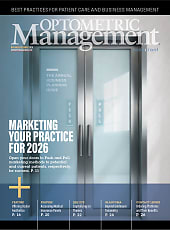One of the most common questions I get asked when I speak about orthokeratology (ortho-k) is, “How young is too young for ortho-k?” My answer typically involves a combination of factors, including child readiness, communication skills, and motivation, rather than a certain age. But that doesn’t mean I treat my youngest ortho-k wearers the same as my teenage users. Just like the lens, the care is customized to the patient. In this article, I share several tips on how to improve the ortho-k fitting experience for children.
Prior to the exam, my lead contact lens technician will call the parent ahead of time to answer the common questions around ortho-k, such as when the lenses are worn, what the care system is like, basic lens handling, the fitting and prescribing process, the lens “warranty” period, and costs. This helps minimize discussion basics in the exam room and allows the provider to get to the most important facts when the child is in the chair, preventing testing fatigue and impatience.
When working with young kids, we make some accommodations during testing to improve the accuracy of the data captured. We often raise the testing tables so they can stand on the floor during the placement of their chin and forehead into the instrumentation for topography and axial length measurements. This reduces motion during the test, as the child is not spinning or rocking on a chair. I also work quickly during retinoscopy and ask as few questions as possible if a manifest refraction is needed to confirm findings.
During the first lens application, we instill proparacaine followed by artificial tears to dilute the anesthesia, followed by sodium fluorescein. When the lens is applied, the child can feel the lenses enough to know they are there but not enough to stimulate significant reflex tearing and fear. Applying sodium fluorescein before the lens rather than after makes it faster and simpler to assess the lens-cornea relationship without having to pump dye under the lens to view the fluorescein pattern.
Follow-up appointments are also quick and focus on corneal health first and proper lens care and handling second. When safe lens wear is made a priority, good vision comes easy for these youngsters.
This editorial content was supported via unrestricted sponsorship




